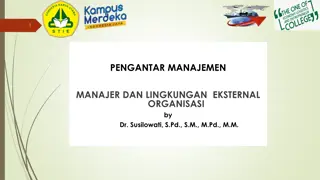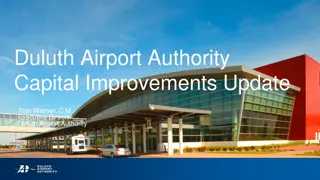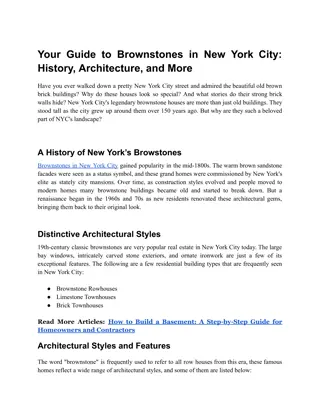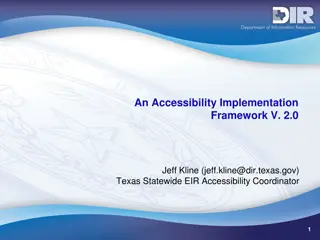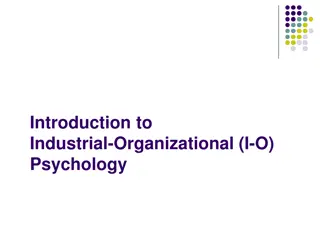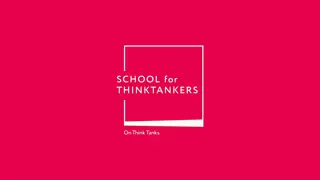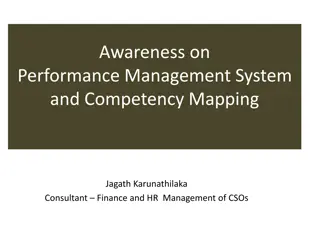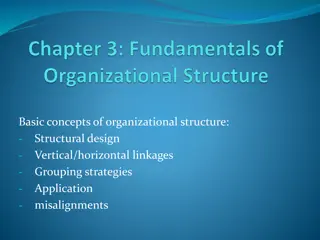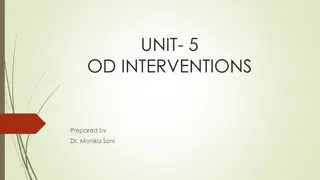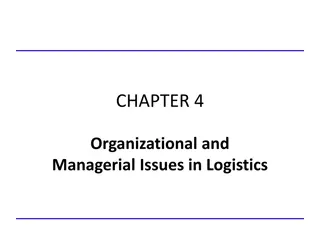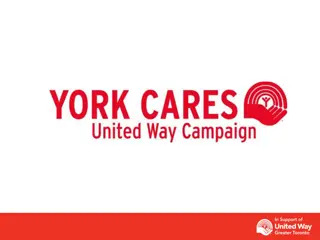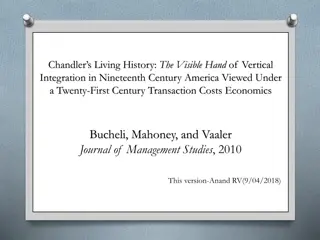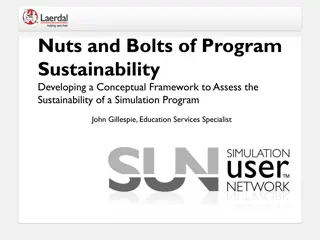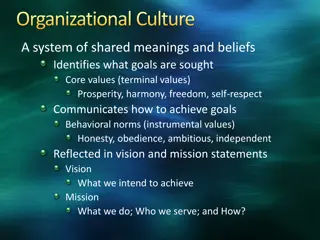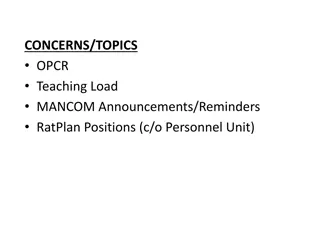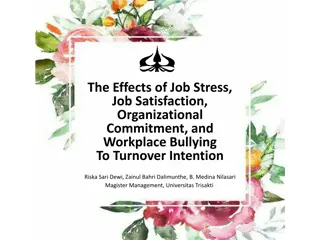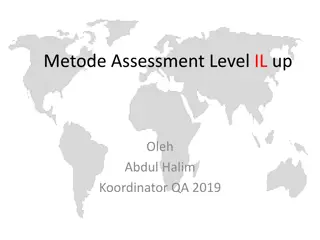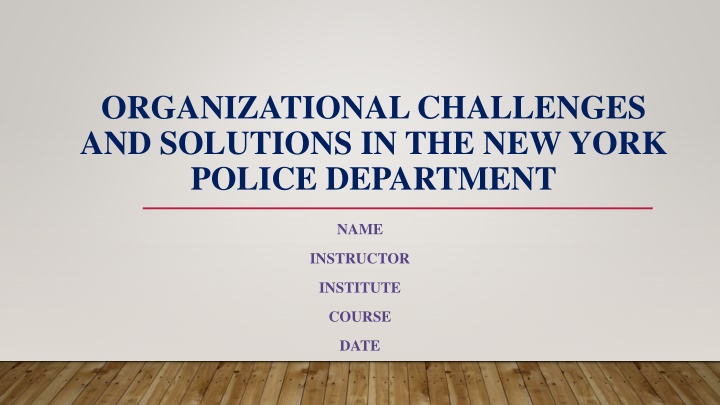
Addressing Organizational Challenges in the NYPD
Explore the organizational challenges faced by the New York Police Department (NYPD), including community trust erosion, resource allocation inefficiencies, and outdated training methods. Discover the effects of these challenges on the NYPD's structure and systems, and potential solutions to enhance organizational effectiveness and public trust.
Download Presentation

Please find below an Image/Link to download the presentation.
The content on the website is provided AS IS for your information and personal use only. It may not be sold, licensed, or shared on other websites without obtaining consent from the author. If you encounter any issues during the download, it is possible that the publisher has removed the file from their server.
You are allowed to download the files provided on this website for personal or commercial use, subject to the condition that they are used lawfully. All files are the property of their respective owners.
The content on the website is provided AS IS for your information and personal use only. It may not be sold, licensed, or shared on other websites without obtaining consent from the author.
E N D
Presentation Transcript
ORGANIZATIONAL CHALLENGES AND SOLUTIONS IN THE NEW YORK POLICE DEPARTMENT NAME INSTRUCTOR INSTITUTE COURSE DATE
INTRODUCTION The NYPD was chosen for this presentation. It was founded in 1845 ("New York police department," n.d.). It is the largest municipal police department in the U.S. The department has over 36,000 sworn officers. The NYPD serves a city of 8.8 million people ("New York police department," n.d.). It has faced many organizational challenges recently.
ORGANIZATIONAL CHALLENGES Community Trust Erosion Resource Allocation Inefficiency Outdated Training Methods Public trust decreases due to racial prejudice and excessive force (De La Hoz, 2024). Financial limitations hinder modernization and officer support. Conventional training neglects modern challenges like mental health crises (Spinks, 2024). NYPD's yearly expenditure exceeds $10 billion (The Guardian, 2023). NYPD's unregulated authority undermines public confidence. Police training in America is outdated and ineffective (Spinks, 2024). This harm is subtler than recent violence and harassment. Neighborhoods will remain suspicious until real change occurs (De La Hoz, 2024). Taxpayer funds contribute to financial destitution for the city (The Guardian, 2023).
EFFECTS OF CHALLENGE #1 ON ORGANIZATIONAL STRUCTURE AND SYSTEMS Community trust deterioration creates obstacles for NYPD collaboration (Andreescu & Vito, 2021). Alienation reduces crime reporting and investigation cooperation (Andreescu & Vito, 2021). Increased criticism and stress heighten tensions among rank-and-file officers. Resources are misallocated to public relations instead of crime prevention. Agencies with low community trust can lead to higher turnover and lower morale (Andreescu & Vito, 2021).
EFFECTS OF CHALLENGE #2 ON ORGANIZATIONAL STRUCTURE AND SYSTEMS Inefficient resource allocation limits NYPD's response to modern challenges. Restricted finances hurt technology, mental health, and community engagement (Controller s Office, 2025). Bottlenecks arise as leaders prioritize conflicting requirements. Outdated communication methods jeopardize response times during crises. Inadequate funding for training increases liability concerns (Controller s Office, 2025).
EFFECTS OF CHALLENGE #3 ON ORGANIZATIONAL STRUCTURE AND SYSTEMS Obsolete training limits NYPD's ability to address modern challenges (Andreescu & Vito, 2021). Conventional courses focus on physical techniques, neglecting psychological training. This gap causes unwarranted escalations in interactions with mentally ill individuals (Andreescu & Vito, 2021). Insufficient training leads to performance discrepancies and weakens cohesiveness.
CULTURAL AND GENDER CHALLENGES ADDRESSED BY LEADERSHIP NYPD leadership addresses cultural and gender imbalances through initiatives (Worden et al., 2020). Diversity is promoted via targeted recruiting and bias training. Women and minority officers are advancing, but slowly (Worden et al., 2020). The Office of Equity and Inclusion confronts discriminatory behaviors (Garcia, 2025). Obstacles remain, especially with wage fairness and career progression (Johnson et al., 2024).
LEADERSHIP PHILOSOPHY AND STRATEGY FOR ADDRESSING CHALLENGE #1 NYPD should adopt transformational leadership to restore community trust (Starnes, 2023). Transparent community forums could foster rapport between cops and citizens. Feedback mechanisms can help tailor policies to neighborhood needs. Emphasizing openness and diversity may improve collaboration and trust (Starnes, 2023).
LEADERSHIP PHILOSOPHY AND STRATEGY FOR ADDRESSING CHALLENGE #2 NYPD should adopt servant leadership to address resource inefficiencies (Campbell, 2024). Thorough audits can detect waste and optimize operations (Campbell, 2024). Data-driven analytics can improve budget allocation to priority sectors External partnerships may reduce costs and enhance skills.
LEADERSHIP PHILOSOPHY AND STRATEGY FOR ADDRESSING CHALLENGE #3 NYPD should adopt adaptive leadership to improve training methodologies (Epps, 2021). Training should include virtual reality simulations and real-world case studies (Epps, 2021). Officers can gain crisis management experience without physical risk. Collaborations with academic institutions may drive innovative discoveries.
CONCLUSION The NYPD faces significant organizational challenges requiring immediate action. Transformational, servant, and adaptive leadership can address key issues. Each approach offers empirical measures for sustained success. Ongoing commitment to change will shape the future of NYC policing.
REFERENCES Alfonseca, K. (2021, October 19). NYPD officers face discipline due to alleged Black Lives Matter protest misconduct. ABC News. https://abcnews.go.com/US/nypd-officers-face-discipline-due-alleged-black-lives/story?id=80661262 Andreescu, V., & Vito, G. F. (2021). Strain, negative emotions and turnover intentions among American police managers. Policing: An International Journal, 44(6), 970-984. https://doi.org/10.1108/pijpsm-01-2021-0014 Campbell, S. R. (2024). The Narrative Inquiries of How Community School Directors Implement Servant Leadership at Full-Service Community Schools in New York City. Controller s Office of New York City. (2025, January 13). Safer for All A Plan to End Street Homelessness for People with Serious Mental Illness in NYC. https://comptroller.nyc.gov/reports/safer-for-all/ De La Hoz, F. (2024, July 4). NYPD s unchecked power continues to erode public trust. Epicenter NYC. https://epicenter-nyc.com/nypds- unchecked-power-continues-to-erode-public-trust/ Epps, D. S. (2021). Integrating Adaptive Leadership and Critical Thinking to Foster Resilience in Emergency Management (Doctoral dissertation, Capella University). Garcia, W. (2025). Equity and inclusion - NYPD. Welcome to NYC.gov | City of New York. https://www.nyc.gov/site/nypd/bureaus/administrative/equity-inclusion.page
REFERENCES Johnson, T. L., Johnson, N. N., Sabol, W. J., Hartman, M.A., & Snively, D. T. (2024). Collective bargaining, police pay, and racial differences in police lethality rates. Police Practice and Research, 1-26. https://doi.org/10.1080/15614263.2024.2355149 New York police department. (n.d.). Welcome to NYC.gov | City of New York. https://www.nyc.gov/site/nypd/index.page Spinks, R. (2024, May 23). Police academy training: Time for reform. American Police Beat Magazine. https://apbweb.com/2024/05/police-academy-training-time-for-reform/ Starnes, C. S. (2023). Transformational Leadership and Intelligence-Led Policing (Doctoral dissertation, Saint Leo University). The Guardian. (2023, May 1). A budget is a moral document : Why does the NYPD need $29m a day? the Guardian. https://www.theguardian.com/artanddesign/2023/may/01/museum-of-broken-windows-new-york-police-budget Worden, R. E., McLean, S. J., Engel, R. S., Cochran, H., Corsaro, N., Reynolds, D., ... & Isaza, G. T. (2020). The impacts of implicit bias awareness training in the NYPD. The John F. Finn Institute. Worden, R. E., Najdowski, C. J., McLean, S. J., Worden, K. M., Corsaro, N., Cochran, H., & Engel, R. S. (2024). Implicit bias training for police: Evaluating impacts on enforcement disparities. Law and Human Behavior. https://doi.org/10.1037/lhb0000568

